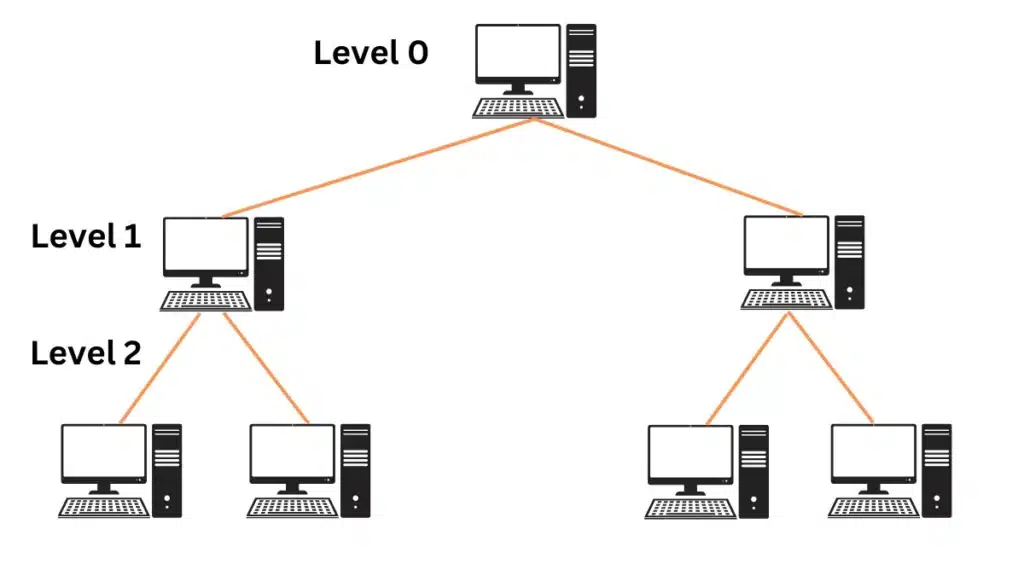What is Tree Topology -Types, Components and Working
Tree topology is a computer network layout that looks like a tree with branches. It combines features of both bus and star topologies. In tree topology, one main cable is called the “root,” and other devices are connected like branches. Each branch can connect to more devices, making it easy to organize the network.

Types of Tree Topology
- Single Tree Topology: This type has one main root that connects all devices, making it easy to set up. If the root node fails, the whole network stops working.
- Multiple Tree Topology: This setup has several root nodes that allow different trees to connect. It provides flexibility and helps reduce the risk of network failure.
- Balanced Tree Topology: Each node has the same number of child nodes in a balanced tree. This topology keeps data flow even and prevents any single node from getting overloaded.
- Unbalanced Tree Topology: In Unbalanced Tree Topology, some nodes have more child nodes than others. This type can cause some devices to receive more data, which may slow them down.
Components of Tree Topology
Here are the main components of tree topology:
- Network Devices: These include switches and routers that help manage data traffic. They improve communication and efficiency in the network.
- Root Node: The root node is the top-level node that connects all other nodes in the network. It serves as the main point for data flow.
- Branch Nodes: Branch nodes connect to the root node and can link to other branch or leaf nodes. They help organize the network structure.
- Leaf Nodes: Leaf nodes are the end devices, like computers and printers, that receive and send data. They do not connect to any other nodes.
- Connection Cables: These cables link all the nodes, allowing data to travel throughout the network. They can be of various types, like coaxial or fiber optic.
How Tree Topology Works?
In tree topology, data travels from the root node down to the branch nodes and then to the leaf nodes (the devices). When a device wants to send data, it first sends the signal to the nearest branch node.
The branch node then forwards the data to the root or other devices. This structure helps keep the network organized, and adding new devices is easy.
Anyone can connect them to an existing branch without disrupting the whole network. This makes tree topology a good choice for larger networks.
What are the tree topology key points?
Tree topology key points:
Hierarchy: Mix of bus and star layouts.
Backbone Cable: Connects smaller networks.
Expandable: Easy to add branches.
Control: Each branch has a hub.
More Cables Needed: Uses a lot of cables.
Which cable is used in tree topology?
Tree topology uses coaxial, twisted pair cable, or fiber optic cables.
Is tree topology a hybrid topology?
Yes, tree topology is a hybrid topology because it combines elements of both bus and star topologies.






Leave a Reply